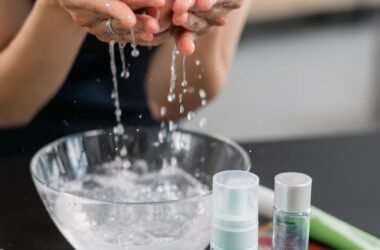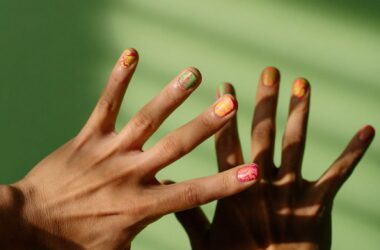Bakuchiol is a popular new product in the hair care industry. It’s become a favorite for people who want healthier, stronger, and more manageable hair.
But what does it do? Is it good for the skin? Can you use bakuchiol with tretinoin?
Here is more on how bakuchiol can help your hair and skin health.
Can You Use Bakuchiol With Tretinoin
Bakuchiol and tretinoin are both topical treatments that are used to reduce the appearance of fine lines and wrinkles. Although they work in different ways, they can be used together as part of an anti-aging skincare regimen.
Research has also shown that using these two products together will enhance the benefits of each product to the skin.
Bakuchiol
Bakuchiol is a natural extract from the seeds of a plant called “Bucchu.” It is produced by several different companies and is marketed as an ingredient for use in cosmetic applications.
One of its main uses is as an anti-aging treatment. In some cases, it is used to reduce the appearance of fine lines and wrinkles, while in others it is used to help heal scarring caused by acne or other skin conditions.
It has also been shown to help lighten dark spots on the skin caused by aging, sun damage, or other reasons.
Tretinoin
Tretinoin is a form of vitamin A that is used in dermatology practices worldwide to treat various types of skin conditions.
It has been shown to increase cell turnover rates on the skin, thereby increasing collagen production and plumping up fine lines and wrinkles on the face and body.
It works by penetrating deep into the dermal layers of the skin.
How Often Should You Use Bakuchiol and Tretinoin?
If you are using both products in the evening (as part of your night-time skincare routine), you may want to alternate between them each evening. This will allow you to experience the benefits of each product without overloading your skin with too many active ingredients.
Bakuchiol has been shown to be safe to use twice daily with tretinoin.
While higher frequencies have not been investigated, there is no reason they shouldn’t be safe to use together.
Also, if you are using bakuchiol in place of a retinol product, it should be used every other day at most, as not only does it have fewer ingredients than a retinol product, but also because it’s less potent than retinol.
What Is the Ideal Ratio Between Bakuchiol and Tretinoin
The ideal ratio to use between bakuchiol and tretinoin is 1:1. If you are using a product that has a higher percentage of tretinoin, then you will need to reduce the amount of bakuchiol in your skincare routine.
For example, if you have a product that has 10 percent tretinoin and 2 percent bakuchiol, then you will need to reduce the amount of bakuchiol in your routine by 50 percent so as not to over-exfoliate the skin.
Tretinoin is much stronger than bakuchiol. In theory, it is possible to get irritation from too much bakuchiol, but it is very unlikely because it does not penetrate the skin as tretinoin does.
If anything excess tretinoin use could cause skin irritation or redness but this would be temporary and would go away as soon as you stopped using it.
Bakuchiol on the other hand would never cause any skin irritation at all.
Tretinoin penetrates into the dermis naturally but also through microscopic tears in the skin caused by physical contact or exfoliating dead skin cells.
What Is the Difference Between Bakuchiol and Retinol?
The primary difference between bakuchiol and retinol is that bakuchiol does not contain any alcohol. It also comes from the seeds and leaves of the babchi plant, while retinol comes from fish liver oil.
Can You Use Retin-A With Bakuchiol?
Yes. Retin-A and bakuchiol both help to treat fine lines, wrinkles, and acne. They are both effective, but they work in different ways.
Tretinoin (the generic name of Retin-A) is a retinoid that helps to promote collagen production, which can help to reduce the appearance of fine lines and wrinkles.
Bakuchiol is an antioxidant that can help to soothe skin conditions like acne and rosacea.
However, it cannot generate new collagen.
While both products have been shown to be effective in helping to reduce the appearance of fine lines and wrinkles, each product can potentially cause side effects when used together.
Specifically, combining these two products may increase your risk of experiencing redness, increased sensitivity, and flaking or peeling skin.
Therefore, it’s best to avoid using them at the same time if possible.
If you want to use both products effectively in your skincare routine, you will likely need to experiment with how much each product you apply and at what frequency.
Should You Use a Retinol Moisturizer With Bakuchiol Serum?
Retinol and bakuchiol work well together because they both help with uneven skin tone or pigmentation.
Retinol is an ingredient that helps exfoliate and even out your skin tone. It also helps reduce fine lines and wrinkles.
Bakuchiol Serum is an antioxidant and moisturizing agent that helps prevent premature aging and even out the tone of your skin.
Bakuchiol Serum can be used in place of a traditional lotion, but it will still work best if you also use a good moisturizer.
Because retinol can cause some irritation, you may want to consider using bakuchiol serum with a retinol moisturizer instead of plain retinol serum if you are prone to redness or irritation.
A good retinol moisturizer will contain emollients, which will help soothe any irritation that is caused by the retinol in the serum.
Which Is Better for Hyperpigmentation: Retin-A Micro or Bakuchiol?
Bakuchiol is better for hyperpigmentation. But that’s not to say that Retin-A Micro doesn’t also have its own benefits.
In fact, one of the biggest differences between these two options is the way in which they go about their business.
Retin-A Micro for dark spots works by exfoliating your skin, opening up pores, and allowing light to get through.
Bakuchiol, on the other hand, works from within the skin itself, by stimulating collagen and elastin production.
It’s worth noting that this makes Retin-A Micro a great option for those with oily or combination skin as it has a pore unclogging effect, but Bakuchiol will be best for those with dryer skin types where it can work from inside out and give you an almost plumping effect on your skin which can help reduce fine lines and wrinkles as well as improve texture.
Which Is Better for Wrinkles: Retin-A Micro or Bakuchiol?
Retin-A Micro is better for wrinkles. Retin-A Micro is the brand name of a prescription topical medication that uses the active ingredient tretinoin.
This medication is used to treat acne, but it is also effective in treating fine lines and wrinkles on the face.
Retin-A Micro works by increasing the cell turnover rate.
This causes dead skin cells to lift off of the surface of the skin, leaving behind newer and softer skin cells in their place.
It also increases collagen production, smoothing out the appearance of wrinkles and fine lines over time.
Retin-A Micro (tretinoin) is available in a cream, gel, and liquid form.
It should be applied once each day directly to the face, gently massaged into your skin, and allowed to dry completely before applying any other moisturizers or cosmetics.
The amount you apply will depend on what your doctor recommends, but it should always be used at a thin layer that does not have clumps in it.
Retin-A Micro can cause your skin to become very sensitive to sunlight; therefore, you should always apply sunscreen when you are outside or plan to be.
Are There Any Side Effects to Using Bakuchiol With Tretinoin?
There are no known side effects to using bakuchiol with tretinoin. Bakuchiol is also used as an alternative to tretinoin.
Some people use it for its antibacterial properties as well as for its ability to reduce inflammation and calm acne.
It is recommended that you talk with your dermatologist before starting a new skincare regimen.
How Do You Use Bakuchiol With Tretinoin
Here are some tips that will help you use bakuchiol and tretinoin for better skin:
1. Use bakuchiol and tretinoin on your skin to reduce wrinkles, fine lines, age spots, and other signs of aging.
2. Apply bakuchiol and tretinoin on your face at night before going to bed. Let it stay on overnight to get maximum absorption.
3. To help with skin discoloration and pigmentation, use bakuchiol and tretinoin regularly in combination with a bleaching cream or serum.
4. Massage bakuchiol and tretinoin into your face for about two minutes before rinsing off with warm water.
5. If you have sensitive skin, do a patch test first by applying some cream on your inner arm before using it on your face.
6. Apply bakuchiol and tretinoin in small quantities.
Final Thoughts
Bakuchiol and tretinoin do not react with each other, and you shouldn’t have to worry about irritating your skin as long as you’re using them correctly.
Of course, just make sure not to miss any application if you are combining the two, and if you begin to notice any side effects like irritation, discontinue their use immediately.







